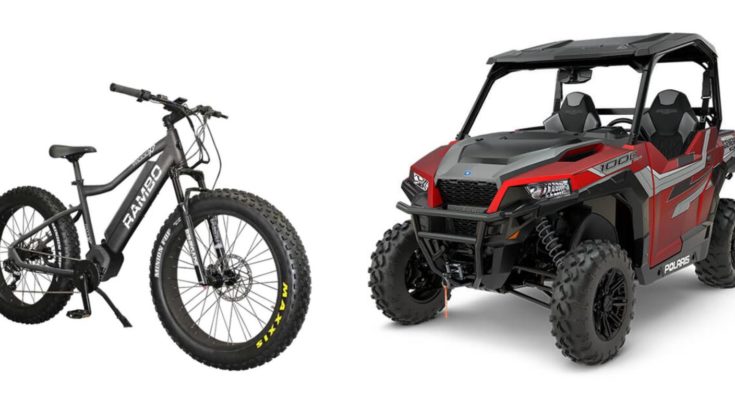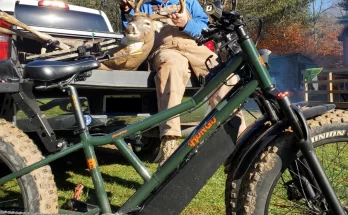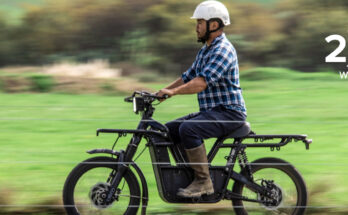eBikes vs. ATVs
eBikes have evolved admirably over the years and the newest models are on par with the more rugged vehicles like ATVs, they’re constantly compared for efficiency and suitability for different roads.
Let’s see what these two impressive vehicles have in common and how they differ. We’ll go through the pros and cons of each, and then take a closer look at the performance of eBikes vs. ATVs
More about ATVs and eBikes
This is an overview of eBikes and ATVs. I took into consideration that they would both be used on and off-road, in all kinds of weather, and for various kinds of trips.
ATVs
All-Terrain Vehicles (ATVs) were designed to be heavy-duty machines. They can handle farm work as well as offroad trips. Actually, they were intended for that kind of rugged lifestyle, their tires perform better on dirt trail than they would on a paved road.
ATVs come in various shapes and sizes, but to be fair in this comparison, we’d consider the more compact models.
Pros
- High power, speed, and acceleration
- Suitable for rough ground
- Has storage space for carrying extras
- Wide tires increase stability on the road
Cons
- Most models have a high price tag
- The motor is quite noisy
- Burned fuel leaves a scent trail and pollutes the environment
- Limited accessibility
- Needs licensing and insurance
- Needs good knowledge of mechanics, maintenance, and repairs
eBikes
eBikes are a step up from regular bikes, and a step away from becoming a moped or a motorcycle.
They come in two basic categories: Full power and Power assist, they differ in how much you’re willing to paddle and how much the motor would help out.
eBikes are very close in principle to hybrid cars. They’re zero-emission vehicles and environment-friendly in so many ways.
They’re required by regulation to have power and speed closer to a fast bike than to any gas-fuelled vehicle.
Regular bikes can actually run pretty fast and easily reach 40 miles per hour, it’s just exhausting to a rider to keep pedaling at that speed. That’s why a motorized bike has a significant edge.
eBikes can go fast even when they’re on the purely automated mode, a power assist eBike can reach a remarkable 50-90 miles per hour. They cover a good distance before needing a recharge, and they’re powerful enough to brave any slopes or rough trails.
Pros
- Lightweight and portable
- Environment-friendly
- Quiet and scent-free
- Budget-friendly models are available
- It’s allowed in areas restricted for other gas-fueled vehicles
- Can be used fully manual, with assisted pedaling, or fully motorized
- Doesn’t need licensing or insurance
- Younger riders are allowed to use it
- Easier to maintain and fix
Cons
- Limited run per charge
- Power, speed, and acceleration are a little less than gas-fueled vehicles
- Less storage space
eBikes vs. ATVs
Let’s see now how they differ in some basic parameters and how they generally perform.
Usage
Both vehicles can be used in city roads and off-road in rougher grounds. eBikes are just a bit more suited to paved roads, and ATVs were designed for rough trails.
Motor Power
eBikes nowadays run on very powerful motors that sustain continuous fully automated runs for more than an hour. This includes climbing on steep hills and braving off-road trails.
Gas fueled vehicles, in general, have more muscle power, and that could come in handy in a variety of settings, but there are other factors to bear in mind.
Cost
eBikes have price ranges that go from $1500 to around $5000, without excessive running cost after purchasing, while ATVs start at about $3000 to $20000 or more. Add to that insurance, fuel, and maintenance costs.
Safety
Both eBikes and ATVs have very basic safety equipment. Their stability is almost the same, but ATVs run at higher speeds, and they weigh more. This ranks them lower than eBikes in terms of safety.
The rider needs to wear a helmet and protective gear, especially on rough terrain.
Maintenance
Basic knowledge of electric and mechanical parts is sufficient to use an e-bike and keep it in good shape. In case of malfunctions on the road, it can be easily fixed with simple interventions.
ATVs are real vehicles with complex mechanical systems. You would probably need professional assistance if your ATV is down, or you can acquire the necessary knowledge to take care of your machine. I strongly recommend that you do.
Environmental Effects
eBikes are very quiet, so if you’re on a fishing or hunting trip, birdwatching, going for a nature photo shoot, you wouldn’t disturb the wildlife.
That’s not the case for ATVs which have a whirring sound that would awaken the fish sleeping at the bottom of the river.
eBikes do not leave a scent, whether a gas trail, smoke from the burned fuel, or even sweat as long as the rider is careful to do less pedaling as he approaches his destination.
ATVs work with gas and the emitted exhaust is quite noticeable. It’s also a source of pollution, which is really unwelcome in the clean open air.
Accessibility
ATVs are pretty slick and they can reach far and wide, so they have the same advantage as e-bikes in its being agile and resourceful, however, certain areas prohibit ATVs or any other gas-fueled vehicles.
eBikes are exempted from that restriction, and so they can take you to fishing spots, that would otherwise take days of brisk walking with heavy baggage.
Storage Space
ATVs are slightly better in this category. Their frame, motor power, and size allow them to carry moderate loads.
eBikes have some room for storage, but it would cover your necessities. The weight of the rider should also be taken into consideration.
Most e-bikes can carry a healthy adult coming back with a good game from a hunting trip. That’s usually all that needs to be carried.
Licencing and Insurance
In most places, anyone over 14 can ride an e-bike, without licensing or insurance requirement. Both items have higher demands in the case of ATVs, where the age limit is above 16, and hefty insurance needs to be arranged.
This affects fishing and hunting trips with friends in an interesting way, it limits the number of riders who can join the trip, and the little group that can go ends up having to do more jobs.
A group of e-bike riders can be bigger and have a broader skillset. There’s safety in numbers, and a larger group is more efficient.
Some Parting Thoughts
Taking a certain kind of vehicle on the road is a serious decision. You need to be comfortable with the transportation method that you choose, and trust that it would perform well throughout the trip.
I’d recommend an e-bike for most transportation needs. You could be commuting to work in the city, taking a day off and going fishing by the lake, joining your buddies on a hunting trip, or photographing the beauty of nature. An e-bike is a cleaner and smarter choice.




